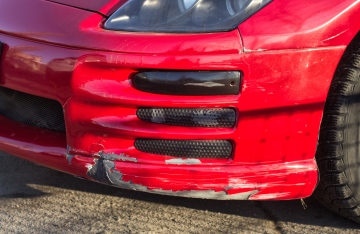If you’re the owner of car, then you’ll likely have invested a significant amount of your wealth into it. for most, it’s an investment that’s second only to a home. You’ll therefore want to ensure that you’re able to extract the maximum possible utility from it, and preserve its value into the future. In this article, we’ll examine some of the ways in which we might keep our vehicles in great condition long in the future.
Boot Liner
If you’re the owner of a particularly dirty dog, or you’re a keen cyclist, then you might be familiar with the problem of storing animals and equipment in the boot of a car. Such items will invariably leave a trail of dirt particles and stray hairs in their wake. That is, unless you invest in a decent boot liner.
The best car boot liners are those which are made to fit within a given model of car. You’ll find these from specialist retailers on the internet. Mercedes, Ford and Volvo boot liners are all available – along with liners to fit a host of other vehicles. Take a look at what’s available, and you’re sure to find an item that’ll help to safeguard your boot.
Check Your Tyre Pressure
Tyre pressure is one of the most important considerations for car owners. Too much and you’ll reduce the lifespan of your tyres, too little and you’ll lose valuable grip on the road – which in turn will cause your fuel consumption to skyrocket.
Avoid these problems by checking your tyre pressure regularly – and especially before embarking on any long trips. If you’re carrying a heavy load, then you’ll need to inflate your tyres accordingly. Check your car’s manual, or the manufacturer’s website, for more detailed instructions.
Condition Your Car
Bodywork is one area where damage to your car is most noticeable – and the negative effect it might have on your car’s value is greatest. You’ll want to therefore regularly inspect your car’s bodywork for bumps and scratches, paying close attention to the areas around the wheels, and the sides – where opening doors in car parks can inflict damage.
In order to preserve the paintwork of your car, and effectively protect it against the elements, you’ll need to occasionally apply a coat of wax or polish. The two substances are often seen as synonymous, but they work in totally different ways. Polish is an abrasive which will remove the very topmost layer of paint – resulting in a distinctive shine. Wax, on the other hand, will fill in the cracks, and thereby offer protection against rainwater and sunshine. Being waterproof, and having a high melting point, mean that a coat of wax will see a car remain in excellent condition throughout the year.
Replace Your Wipers
After a while, windscreen wipers will begin to degrade. When this happens, they won’t remove the dirt from your windscreen effectively, and will instead smear it across the glass, reducing visibility. Don’t wait to replace them, as the situation isn’t going to improve – instead get new ones immediately. You’ll improve the look of your car – and your ability to look from it!
Lights
When lights go out, it’s a safety concern – whether those lights be headlights, indicators, or brake lights. Be sure to regularly inspect your lights to see that they’re operational – especially during winter.
Keep a Toolkit Handy
If your car should break down, then keeping a few basic tools to hand to help get it back onto the road might be essential. Don’t skimp on the essentials – there’s no point in having a spare tyre handy if you don’t have the jacks and snappers necessary to fit it.
Check Your Fluids
Most people leave checking and topping up their brake fluid, washer liquid and oil levels to their mechanic. But occasionally topping these things up throughout the year will ensure that your car has the best possible protection against mechanical failure – and so you should do it yourself.
Read the Manual
Finally, it’s worth stressing that in order to get the best from your vehicle, it’s important that you take a glance at the manual when you first get it – and keep it in a place where it can be easily referred to. Fortunately, you’ll be able to find the majority of manuals online now – so even if you’re buying a car without one, you needn’t be overly concerned about not finding the information you need when you need it.




